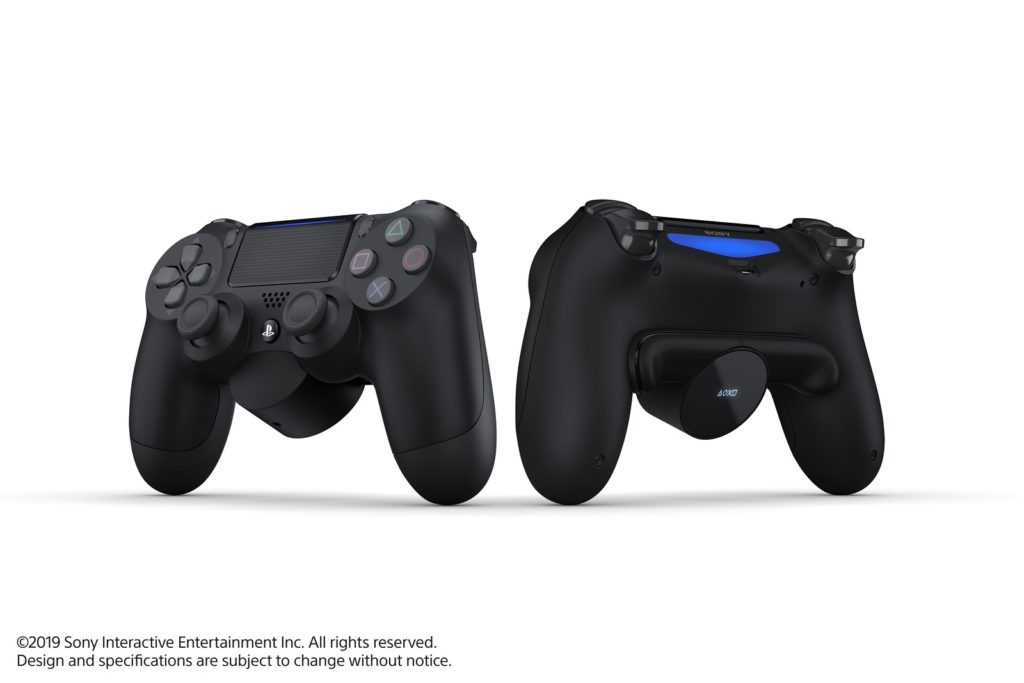Your fortnightly frequent11y newsletter, brought to you by @ChrisBAshton:

Sony’s new Back Button Attachment brings customizable paddles to the DualShock 4
- Sony are releasing a $30 attachment for the DualShock 4 controller which slots into the back and provides two extra large buttons. These can be mapped to any of the other buttons on the controller, and could be a (literal) game changer for disabled users who may struggle to use the controller standalone. It’s not being marketed as an accessibility aid, but as a tool for power users to level up their gameplay. Indeed, non-disabled users could find the tactile buttons improve their gaming performance.
- Aside: It’s highly unusual for Sony to release something like this so late in the PS4 lifecycle, which suggests these might work with the DualShock 5 when it comes out.
Epilepsy Foundation Bombarded with Seizure-Triggering Twitter Posts
- The Epilepsy Foundation has filed a criminal complaint with the U.S. Attorney and the Office of the State’s Attorney in Maryland, against a number of Twitter uses who maliciously posted seizure-inducing content on its feed. This happened during November: National Epilepsy Awareness month. A similar attack happened in 2016 against journalist Kurt Eichenwald, which purportedly triggered a seizure.
- Aside: around 3% of people with epilepsy can be triggered by exposure to flashing lights or certain visual patterns.
Accessibility Testing by People with Disabilities
- An article of two halves, by a11y expert Becky Gibson. The first half gives guidance for performing your own a11y audit. It recommends WAVE as a starting point, followed by the Web Developer extension for validating document structure and numerous bookmarklets for additional automated tests. This is followed by manual keyboard and screen reader testing – checking for WCAG 2.1 AA violations (as opposed to WCAG 2.0, which was released in 2008 and has little guidance for mobile) – and finally, testing responsive design and zoom/magnification. The second half highlights Vision Aid for specialising in training blind individuals as testers, and argues the business case for this (‘native’ screen reader users will spot problems more quickly and catch some issues that other testers might not).
What to Do If You Think Your Child Is Color Blind
- Around 1 in 10 males have some form of colour blindness – a much higher rate than that in women. It’s a genetic trait typically passed down from the mother. You can conduct Ishihara tests at home (online) to determine colour blindness. There is no cure but there are ways you can manage the condition, e.g. by labeling things rather than relying on colour alone.
Mattel releases first deck of UNO in Braille
- The first official braille UNO deck is going to the Idaho School for the Deaf and the Blind. Some students have played it before but have needed to have teachers adapt existing sets by hand braille-ing them. The braille deck looks identical to the non-braille deck, but has some non-intrusive dots in the corner of each card. It makes you question why games companies don’t make their products braille-friendly by default.
- Article by Liam O’Dell, highlighting that a lot of political campaign videos lack captions, making them inaccessible to the 11 million people in the UK (1/6 of the population) with deafness or hearing loss (not to mention that 85% of all videos on Facebook are watched without the sound on). This has triggered the #NoCaptionsNoVote campaign, where deaf people threaten not to vote for parties who don’t provide captions. Liam draws attention to the closure of the Access to Elected Office Fund, which affects deaf candidates standing to become MPs, who now have to fund their own costs such as interpreters. Finally, some but not all parties have published their policies in British Sign Language.
- Bonus article: read How Philly is making all voting locations accessible for the first time ever (November 5th 2019). TDLR: all venues have been ‘accidentally’ made wheelchair accessible so that there was enough room for workers to erect the new (large) touchscreen voting machines.
Screen reader bug fixed in Firefox
- In September 2018, GDS Accessibility Expert Anika Henke filed a bug report with Mozilla, suggesting that words are incorrectly merged together in screen readers when using
word-wrap: break-wordwith a small width. For example, “posted on” is pronounced “postedon” if its container is so small that each letter is on its own line. The root cause was actually a 4 year old bug to do with trimming whitespace, which Firefox has fixed in its latest version (Firefox 71). You may be interested in alphagov/reported-bugs to see all bugs GDS has reported in browsers, operating systems and assistive tech. Meanwhile, well done all who take the time to report, debug and fix these far-reaching issues!
Did you know that you can subscribe to dai11y, week11y, fortnight11y or month11y updates! Every newsletter gets the same content; it is your choice to have short, regular emails or longer, less frequent ones. Curated with ♥ by developer @ChrisBAshton.